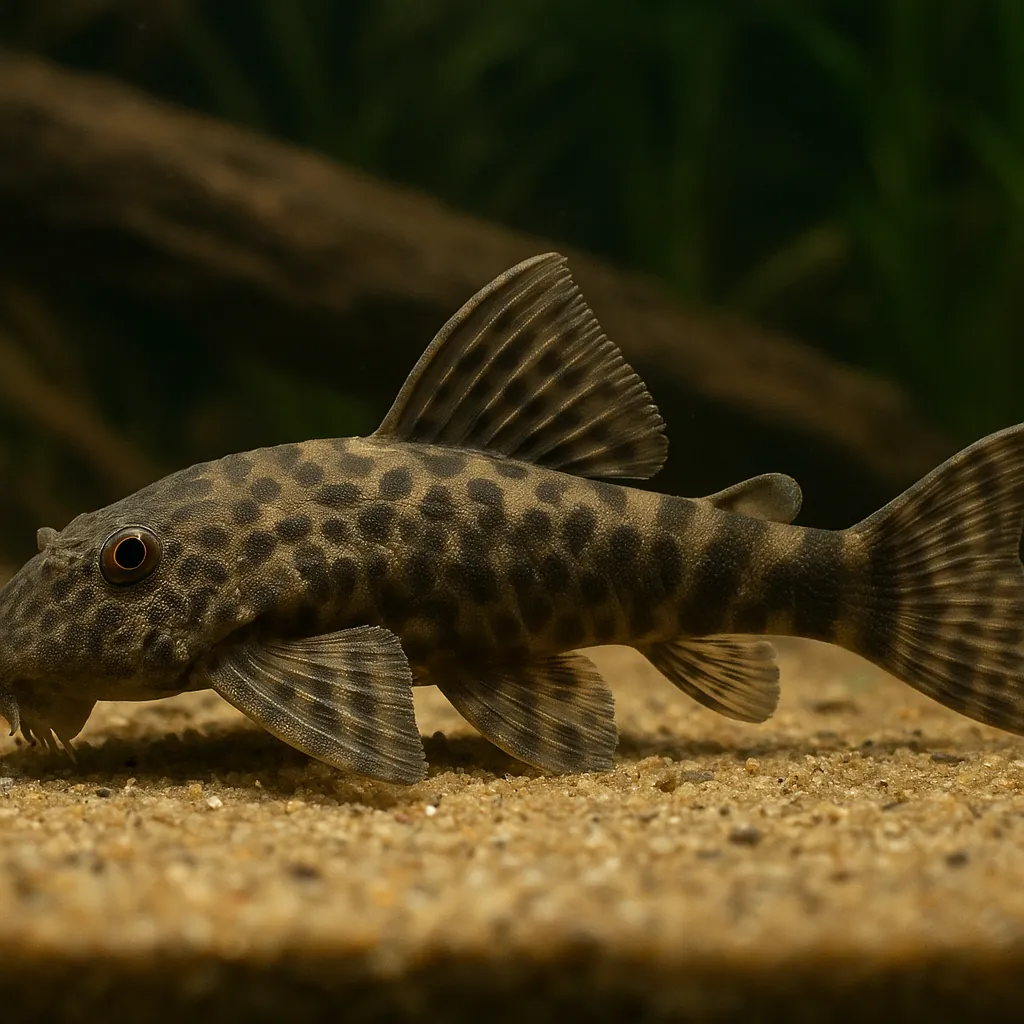
Dwarf suckermouth
Introduction
The Dwarf Suckermouth Catfish, commonly known as the Otocinclus Catfish or "Oto," is a small, peaceful freshwater fish cherished by aquarists for its algae-eating abilities and gentle nature. Growing up to 5 cm (2 inches) in length, these fish are ideal for community tanks, especially for those looking to control algae growth naturally. Their low-maintenance care requirements make them suitable for both beginner and intermediate fishkeepers.
Why are Dwarf Suckermouth Catfish popular among aquarists?
Their small size, peaceful temperament, and efficient algae-eating habits make them a favorite for maintaining clean and harmonious community aquariums.
Are they suitable for beginners?
Yes, their hardy nature and straightforward care requirements make them an excellent choice for novice fishkeepers.
Care and Environment
Providing the right environment is crucial for the health and well-being of Dwarf Suckermouth Catfish. A minimum tank size of 40 liters (10 gallons) is recommended for a small group, but a larger tank of 75 liters (20 gallons) or more is ideal for maintaining stable water conditions and accommodating a group of 4–6 individuals.
Maintain water temperatures between 21°C and 26°C (70°F to 78°F), with a pH range of 6.0 to 7.5, and water hardness between 6 to 15 dGH. Regular water changes and efficient filtration are essential to keep the water clean and oxygenated.
Incorporate live plants, driftwood, and smooth rocks to mimic their natural habitat and provide hiding spots. Broadleaf plants like Java Fern, Anubias, and Amazon Sword are excellent choices. A dark substrate can enhance their coloration and reduce stress.
While they primarily feed on algae, it's important to supplement their diet with algae wafers, blanched vegetables like zucchini and spinach, and occasional live foods such as daphnia or brine shrimp. Remove any uneaten food within 12 hours to maintain water quality.
How many Dwarf Suckermouth Catfish should be kept together?
They thrive in groups of 3 to 6 individuals, which helps reduce stress and encourages natural behaviors.
Do they require special lighting?
Bright lighting is recommended to promote algae growth, providing a natural food source for the fish.
Are they sensitive to water quality?
Yes, they are sensitive to poor water conditions. Regular maintenance and monitoring are essential to keep them healthy.
Origin and Habitat
Dwarf Suckermouth Catfish are native to South America, inhabiting slow-moving streams and rivers rich in vegetation, branches, and leaf litter. These environments create slightly acidic and soft water conditions, which are optimal for their well-being.
What type of water bodies do they inhabit?
They are found in slow-moving streams and rivers with abundant plant life and organic debris.
How do their natural habitats influence their care in aquariums?
Replicating their natural environment with plants, driftwood, and soft, slightly acidic water helps them thrive in captivity.
Temperament and Compatibility
Dwarf Suckermouth Catfish are peaceful and non-aggressive, making them excellent additions to community tanks. They are compatible with small, peaceful fish such as tetras, rasboras, danios, corydoras, shrimp, livebearers, and pencilfish. Avoid housing them with larger, aggressive species that may pose a threat.
Do they shoal?
While not known to be a schooling fish, they can be kept in groups of 3 to 6, provided the aquarium is large enough.
What are ideal tank mates for them?
Small, peaceful species like tetras, rasboras, and corydoras make suitable companions.
Can they be kept with shrimp?
Yes, they are compatible with shrimp and can coexist peacefully in the same tank.
Interesting Facts
Dwarf Suckermouth Catfish have a unique adaptation that allows them to breathe air. A duct forms at the junction between the esophagus and the stomach, expanding into an enlarged, ring-like diverticulum, characteristic of this genus, which allows air-breathing.
How long do they live?
With proper care, they can live between 3 to 5 years.
Are they easy to breed in captivity?
Breeding them in captivity is challenging, and most available specimens are wild-caught.
Sources
All information in this article has been gathered from the following reputable sources:
Overview
Recommended Tank Size 19.8 Gallons (for groups of 4 or more) |
Minimum Group Size 3 |
Minimum Tank Volume 10.6 Gallons |
Maximum Adult Length 2 inches |
Average Adult Length 1.6 inches |
Shoaling (6+ required) No |
Preferred Water Type Freshwater, soft, slightly acidic |
Temperature Range (°C) 21–26 |
pH Range 6.0–7.5 |
Water Hardness (dGH) 6–15 |
Typical Lifespan (years) 3 years |